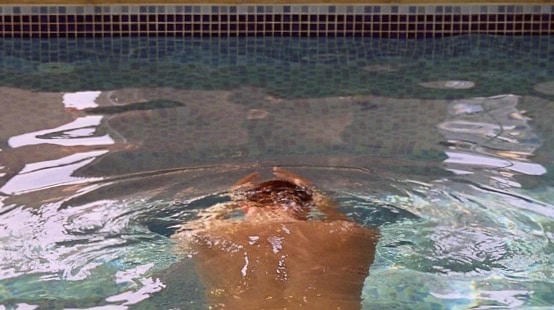Because the wall in a swimming pool becomes a destination, it’s symbolic for people learning to swim. How we approach the wall says a lot about our attitude to swimming generally.
When I started teaching swimming to children in 1995, I was given an eager group of early learners, all clinging to the wall in the deep end of a little school pool, some of them with a polystyrene float in one hand. I’d start them off on each trip across to the opposite wall with some new learning point. But the children always had to get across. Reaching the wall was their main goal.
Getting to the wall, usually by kicking legs vigorously and clutching a float, is the focus of many adult swimming lessons too. Pupils are likely to be fearful, tensing their muscles and holding their breath.
Reaching the wall unaided and without a float is seen as a milestone, regardless of the way it’s been achieved.
The learner gets to a point of safety by doing something (kicking and reaching). The water (the obstacle, because of its potential to drown) is defeated.
‘You did it!’
‘I did it!’
This is how people learning to swim think about getting to the wall, as if water equals danger and the wall, safety. It’s up to the teacher to change that.
A positive milestone
Learning to get to the wall in a new way, without panicking, is a positive learning experience and a real milestone.
In early lessons, when non-swimmers are ready to glide to the teacher, who needs to be there to help them regain their feet in shallow water, our attention needs to be on neck, head and arms. Is the pupil reaching, looking forward, grasping for the safety of the person in front? Or waiting, looking at the floor with a relaxed head and enjoying the support of the water?
When learners don’t have enough confidence to regain their feet independently, they can remain calm and relaxed only up to the point of deceleration. So a touch of a pupil’s head or hands from the teacher is needed to prevent panic setting in when it’s time to stop.
Both for learners able to regain their feet independently and those who still need to arrive at a point of contact, gliding to the wall is a useful practice.
Waiting for the wall to touch us
The key to success is waiting for the contact of the wall, not reaching and grasping for it, not looking for it.
Touch, not sight, should be the sense which tells us we’ve arrived, fingers making gentle contact, cushioned by the water.
We should then keep our face underwater, push gently against the wall with our hands, watching our knees come forward and our feet land on the floor. We need to reverse, move backwards, away from the wall, instead of grabbing the top of it as if to climb out. We should avoid looking at the wall until we’ve found our balance, with our feet on the floor.
It’s all very simple but the practice of gliding to the wall will contain either calmness, control and trust, or at least a bit of the opposite.
Even more advanced swimmers benefit from watching our reaction as we arrive at the wall after another length. A moment of rest, with a decision not to gasp, can be very useful.So getting to the wall will either reinforce our misconceptions about swimming, based on instinctive fear, or it will help to change them. Do we rush or let it happen? Is the water an obstacle that must be overcome or does it support us and help us move? Do we approach it with fear and tension or can we treat it like a friend?


